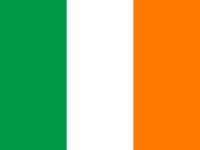DAA Returns to Profit in Challenging Business Environment
The Dublin Airport Authority (DAA) returned to profitability during 2010 despite continued difficult trading conditions and a significant once-off impact of volcanic ash and extreme weather on passenger volumes.
The DAA Annual Report for 2010, published today (June 24) shows Group profits for the past financial year amounted to €33.1 million. This compares with Group losses of €13.3 million in 2009 following exceptional charges that year of €51 million.
“The business environment remained very challenging for DAA during 2010, due to the impact of the economic downturn in Ireland, constrained business and consumer spending in many of our passenger markets, and contraction of airline services. In addition, the exceptional effect of the Icelandic ash cloud last spring and the snow and ice conditions prior to Christmas, reduced passenger numbers by up to one million across our three airports with a consequent €13m hit to our bottom line,” said DAA Chief Executive, Declan Collier.
“We are confident, however, that a combination of renewed economic growth and continued robust management of our costs will enable us to re-build our profitability and strengthen our balance sheet in the years ahead,” he added.
The improved financial performance was due in part to a significant reduction in costs. The successful implementation of the Group’s Cost Recovery Programme (CRP) will deliver annualised savings in labour costs alone of close to €40 million.
“As the economic environment deteriorated dramatically through late 2008 and early 2009, the company and its staff responded rapidly to the changed circumstances. The combination of the successful implementation of CRP, a continued focus on non-manpower costs and the introduction of new terms and conditions in Terminal 2, has brought the company’s cost base to 2005 levels, in line with passenger volumes,” Mr Collier said.
Group turnover rose by 2% to €558 million in 2010 due principally to a rise in aeronautical charges and increased sales revenues at the Group’s overseas operations. Group EBITDA (earnings before interest, taxation, depreciation and amortisation) increased by 17% to €147 million while the Group’s net debt stood at €765 million at year end.
Profits at DAA’s wholly-owned subsidiary company, Aer Rianta International (ARI), made a significant contribution to the Group’s financial performance. ARI, which manages DAA’s overseas airport investments and airport retailing operations, saw profits increase by 40% to €18.8 million compared to profits in 2009 of €13.4 million before exceptional charges.
“The highlight of the year was the opening of Terminal 2 at Dublin Airport last November, which also signalled completion of the Group’s, five-year Transforming Dublin Airport Programme. Over the subsequent three months we successfully delivered a complex, phased transfer of those airlines scheduled to operate from the new terminal, which was completed as planned by February 2011,” Mr Collier said.
“Over 40% of Dublin Airport’s passengers are now using Terminal 2, as planned, and customer feedback has been very positive to date. The new terminal underpins the continued enhancement of customer service at Dublin Airport, which has seen the airport rise 18 places to enter the top 10, in the quarterly ACI Customer Satisfaction Survey of peer European airports. This new infrastructure has been delivered while also remaining very competitively priced compared to our peer airports,” he noted.
Passenger numbers across Dublin, Shannon and Cork airports fell by 13% to 22.6 million last year. Factoring out the impact of the exceptional natural events, DAA estimates the underlying decline in passenger traffic was 10%.
Passenger numbers at Dublin Airport were 10% lower at 18.4 million; those at Cork Airport were 12% lower at just over 2.4 million, while Shannon Airport experienced a 37% reduction to 1.8 million. Terminal traffic at Shannon, the number of passengers who began or ended their journeys at the airport, fell by nearly 40% during the period principally due to the withdrawal of a number of Ryanair services.
“The evidence so far this year is that passenger traffic generally is beginning to stabilise and that there is some growth in overseas passenger volumes. DAA is working closely with all key stakeholders including the Government to support a return to sustained passenger growth at our airports in tandem with economic recovery,” Mr Collier said.
“In this context, we have enhanced our “Growth Scheme” to further incentivise incremental traffic growth at each of the three airports. Using a base line of each airport’s 2010 traffic outturn, airlines will benefit from a 100% rebate of Passenger Service Charges for additional passengers delivered on a year-by-year basis over the three-year period to 2013. When added to our existing new route and service incentive schemes, the DAA is offering up to €75 million in incentives to airlines during this period, exclusive of the government-led initiatives on the Aviation Travel Tax,” he added.
Ends


